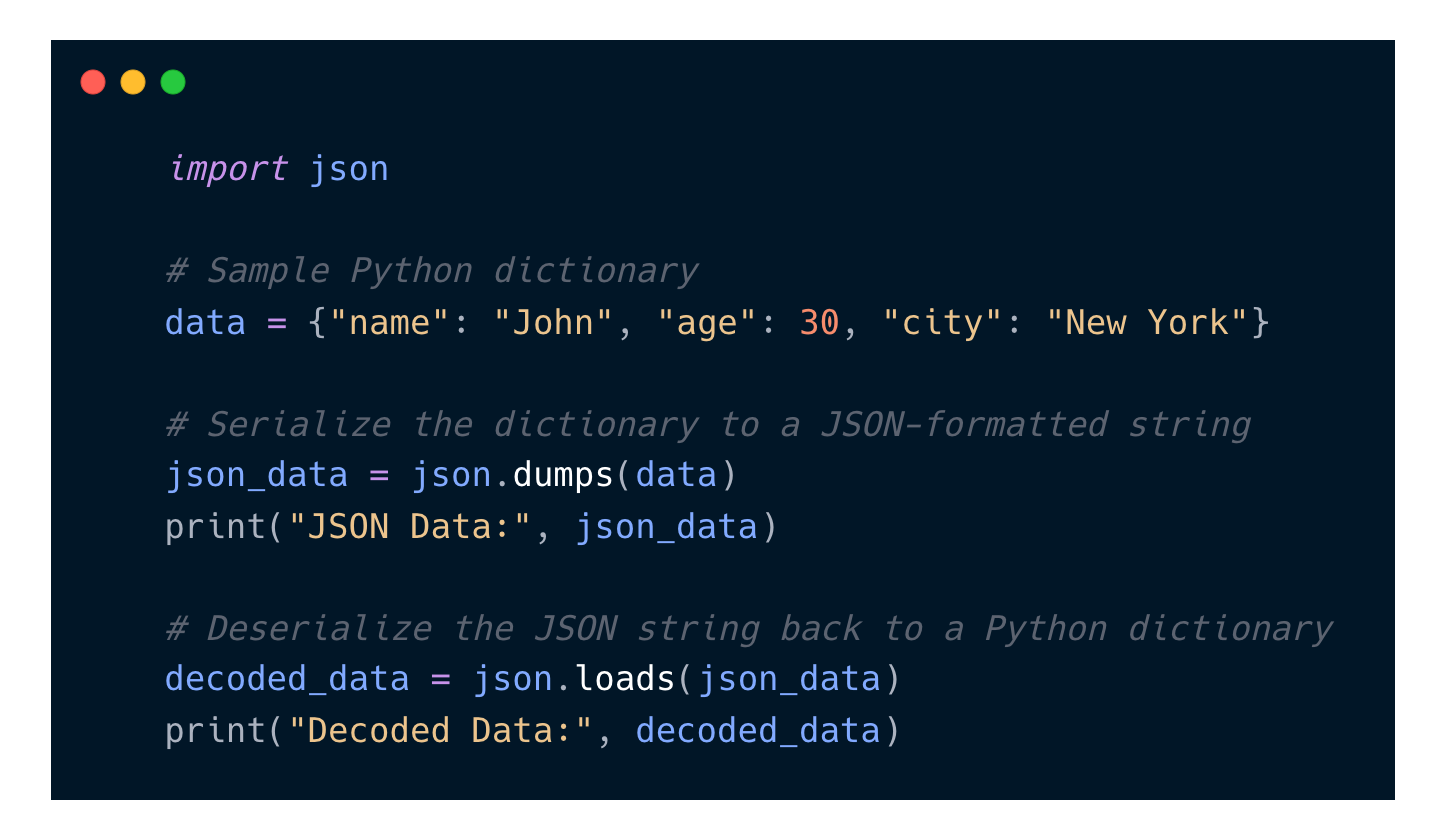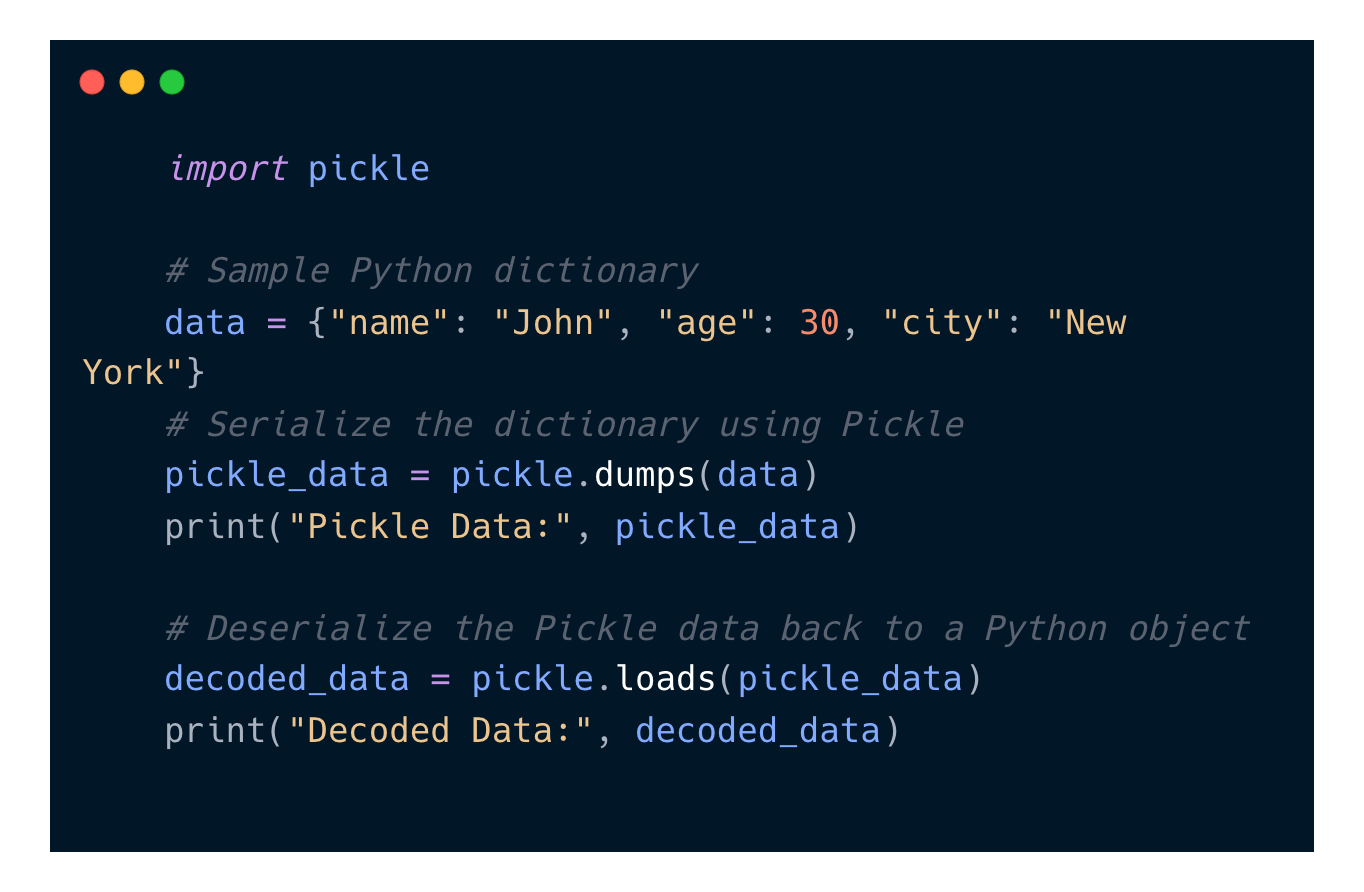
Data serialization is the process that involves converting complex data structures, objects and data representations into a form in which they can be easily stored, transmitted or reconstructed at a later stage considering many things.
Importance of Data Serialization
Storage and Retrieval
- By serializing it to a file or database, serialization protects the structure of data.
- When necessary, it deals with the retrieval of the information by deserializing it back to its original structure.
Interprocess Communication
- During communication among different processes or systems serialized data is often applied for efficient transfer of data.
- Serialization allows the transmission of data between applications or services in a way that does not depend on any platform.
Network Communication
- There are very few cases where information for network communication does not have to go through some form of serialization.
- The purpose is to make sure that information being transported through a network can be efficiently sent across the wire and reconstructed on the other end.
Cross-Language Communication
- In systems involving different programming languages, data interchange employs a common format which is sometimes referred to as serialization.
- This makes it possible to exchange information seamlessly between applications implemented in various languages.
Object Persistence
- Serialization comes in handy when preserving the state of objects so that they can be stored and recreated at a later time.
- This is particularly useful in cases such as saving/loading game states or session management in web applications.
Data Representation Standardization
- Serialization standardizes the way complex data structures are represented across different parts of a system or even different systems.
Versioning and Compatibility
- Serialized data might be versioned to make it possible to handle changes in the data structure over time.
- It makes updating software backward and forward-compatible.
Efficient Data Transmission
- Serialized data is usually more compressed than its actual form making storage more efficient and transmission faster over networks.
Understanding JSON Serialization
What is JSON?
“JSON” which means JavaScript Object Notation is a very lightweight data interchange format. Human beings can read it easily, and machines can parse it well and generate it easily too. JSON is a text format that is entirely language-independent but uses conventions that are familiar to programmers of the C family of languages including C, C++, C#, Java, JavaScript, Perl, and Python among others.
What is JSON in Python?
In Python, the JSON module provides methods for working with JSON data. It can be used to encode Python objects into JSON format (serialization) and decode JSON-formatted data into Python objects (deserialization).
Code snippet demonstrating basic JSON serialization

Pros and Cons of JSON Serialization
Pros of JSON Serialization
- Human-Readable Format: JSON is a human-readable and writable format. This characteristic makes it easy for developers to read and understand the data, facilitating debugging and manual inspection.
- Lightweight and Compact: JSON is a lightweight data interchange format. It results in compact data representations, which is beneficial for data transmission over networks, reducing bandwidth usage.
- Interoperability: JSON is language-independent, meaning it can be easily exchanged between systems implemented in different programming languages. This interoperability is particularly valuable in distributed systems and web development.
- Widely Supported: JSON is supported by a broad range of programming languages and platforms, making it a versatile choice for data exchange in diverse ecosystems.
- Simple Syntax: JSON has a straightforward syntax, consisting of key-value pairs, arrays, and nested structures. This simplicity contributes to its ease of use and popularity.
- Web Integration: JSON is commonly used for web APIs due to its compatibility with JavaScript, making it a natural choice for data interchange in web applications.
Cons of JSON Serialization
- Limited Data Types: JSON has limited support for representing certain data types, such as datetime objects or binary data. Extra encoding steps may be required to handle these types.
- Security Concerns: While generally considered safe for most use cases, deserializing untrusted JSON data may pose security risks, especially if the data comes from an untrusted source.
- No Standard for Schema Definition: Unlike some other serialization formats, JSON does not provide a built-in standard for defining and enforcing data schemas. This can lead to challenges in ensuring data consistency and structure.
Understanding Pickle Serialization
What is Pickle?
“Pickle” in the context of computer science generally refers to the process of converting a data structure or object into a byte stream. This byte stream can be stored in a file, sent over a network, or used for various other purposes.
The term “pickle” is often associated with serialization, a mechanism for converting complex data types, such as objects and data structures, into a format that can be easily stored, transmitted, and later reconstructed.
What is Pickle in Python?
“Pickle” specifically refers to the serialization module provided in the standard library. The `pickle` module allows you to serialize and deserialize Python objects. Pickle is designed to handle complex data structures, including custom classes and functions while preserving their relationships and structure.
Code snippet demonstrating basic Pickle serialization

Pros and Cons of Pickle Serialization
Pros of Pickle Serialization
- Object Preservation: Pickle can serialize complex Python objects while preserving their relationships and structures. This is particularly beneficial for applications dealing with custom classes and intricate data structures.
- Efficient Handling of Python Types: Pickle efficiently handles a wide range of Python data types, including custom objects, functions, and instances of user-defined classes.
- Binary Format: Pickle data is stored in a binary format, making it more efficient for storage and transmission within a Python environment.
- Serialization of Functions: Pickle supports the serialization of functions, allowing the preservation of executable code, which can be useful in certain scenarios.
- Versatility: Pickle is versatile and can be employed for various use cases, such as internal data storage, object persistence, and the serialization of complex data structures.
Cons of Pickle Serialization
- Python-specific format: Pickle is Python-specific and may not be interoperable with other languages thus can’t be used interchangeably in cases of data being shared between different language environments.
- Human-readability: Since it is not readable by human beings, pickle data can be hard to inspect and debug manually. This lack of transparency can have a disadvantage when dealing with serialized data.
- Compatibility version: Python version additions make Pickle be affected by little changes hence there may exist compatibility issues during unpickling using a different version of Python.
- Interoperability limitation: In case one needs to share their data with systems developed in other programming languages besides Python, then pickling would not be the best option for them since this process works well only in Python-based settings.
Pros and Cons Table:
| Aspect |
JSON |
Pickle |
| Human-Readable |
✔️ Easy to read and understand. |
❌ Not human-readable, optimized for Python. |
| Compatibility |
✔️ Language-independent, widely supported. |
❌ Python-specific, limited interoperability. |
| Security |
✔️ Generally considered safe for untrusted data. |
❌ Can execute arbitrary code and security risks. |
| Data Types |
❌ Limited support for custom Python classes. |
✔️ Can serialize a wide range of Python objects. |
| Interoperability |
✔️ Interoperable with other programming languages. |
❌ Limited interoperability outside Python. |
| Complexity Handling |
❌ May struggle with complex Python objects. |
✔️ Efficiently handles complex Python structures. |
| Use Case |
✔️ Web APIs, configuration files. |
✔️ Internal data storage, and object persistence. |
Best Learnings | Python Environment Variables: A Step-by-Step Tutorial for Beginners



One Reply to “Data Serialization in Python: JSON vs. Pickle”
Data Serialization in Python: JSON vs. Pickle - DevStackTips
March 24, 2024
[…] post Data Serialization in Python: JSON vs. Pickle appeared first on […]
Comments are closed.